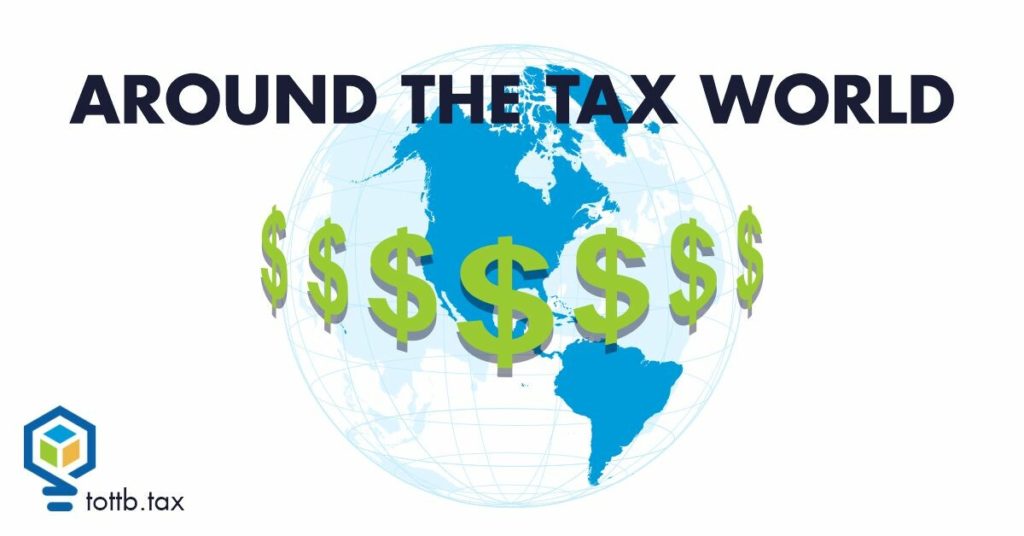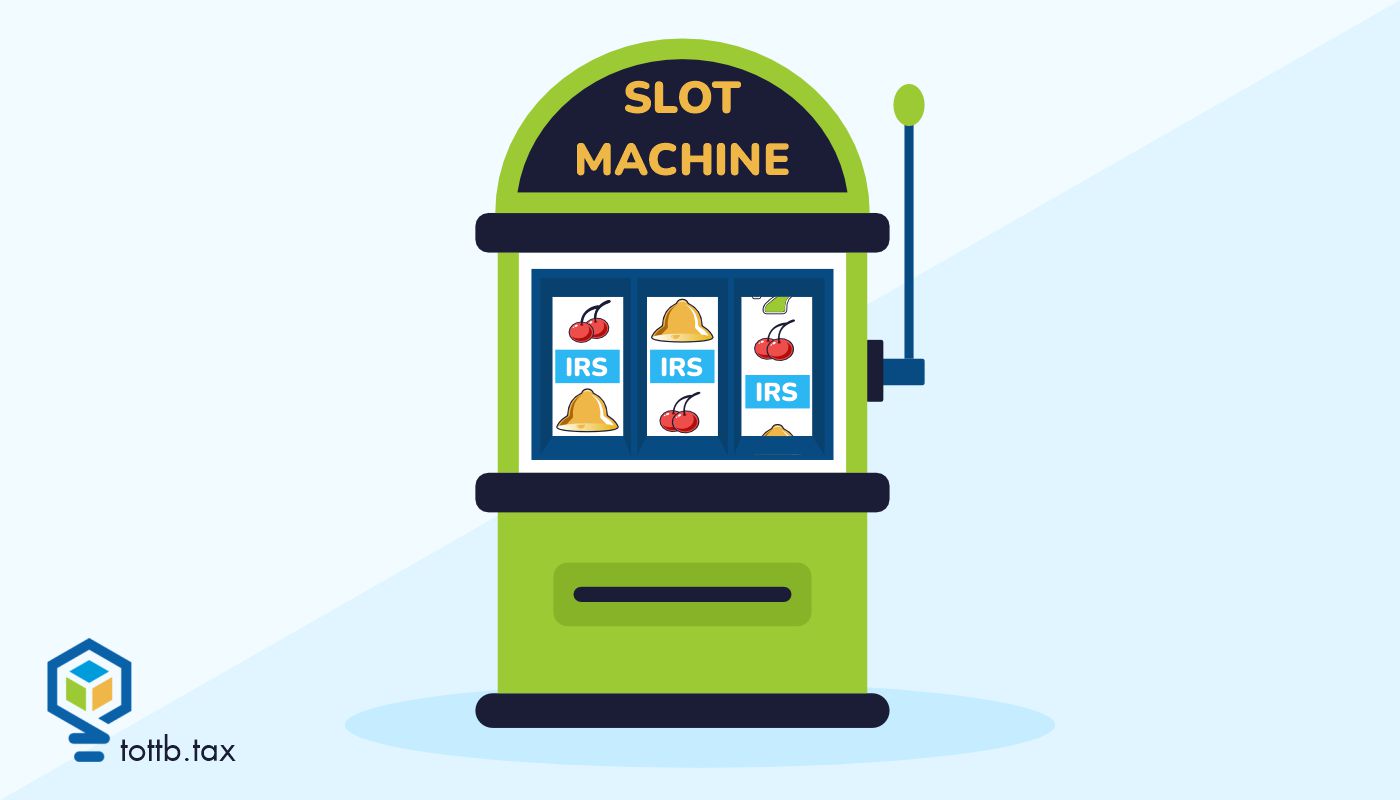
At Around the Tax World, you can find out all about what’s going on in the wonderful, worldwide world of tax. Every month, we’ll feature a few mini-articles on what’s been going on in the world when it comes to tax, and fully available for viewing even if you don’t have a subscription.
If you wish to subscribe and gain access to all articles on the site, be sure to check out the benefits of doing so here!
Check out what’s happening all around the world of tax!
In The Headlines
- Inflation rises more than expected in February when it comes to consumer spending. The “core personal consumption expenditures (PCE) price index” is a key inflation measure for the Federal Reserve. PCE shows how much of the income earned by taxpayers is spent on goods and services rather than being saved for the future. This index rose by 0.4%—the largest gain since January 2024—setting the 12-month inflation rate at 2.8%. Economists had projected lower numbers: a 0.3% increase and 2.7% rate for the past year. Since this measurement does not include food or energy prices, which can fluctuate too dramatically, it is considered a better predictor of long-term inflation trends. The result? Those who have been hoping that the Fed will introduce the next interest rate cuts soon may have longer to wait.
- Can Intel bounce back from its losses? New CEO Lip-Bu Tan thinks so. The microchip maker had a rough year in 2024 as its stock fell by 60%—the biggest drop in the company’s history. Intel has also faced a number of lawsuits, most recently by shareholders claiming the company concealed financial problems related to its foundry division. However, Intel stock saw a 15% increase in March after Tan was announced as the new CEO. With his experience leading a semiconductor design software company and serving on the boards of 14 other semiconductor companies, investors showed new optimism. However, some still argue that Intel would be better off splitting up the business and selling. This would be easier said than done since Intel has its own unique manufacturing processes and receives billions in CHIPS Act funding that require the company to majority ownership of its foundry.
- Will Congress renew the 2017 Trump tax cuts? It may all come down to a change in accounting method. Republican lawmakers are looking for a way to make the expiring tax breaks from the Tax Cuts and Jobs Act a permanent part of the tax code. The obstacle? A plan for footing the $4.6 trillion bill. The Congressional Budget Office has named that as the cost for extending the tax cuts over the course of the next 10 years. Currently, Senate budget rules require a plan for paying for the tax cuts to be in place for the proposal to move forward. Republicans are advocating for a new accounting method that would set the cost at $0 and allow a majority vote to approve the new bill. The decision on whether this change in policy is allowable will be made by Senate Parliamentarian Elizabeth MacDonough—a nonpartisan appointed official who is tasked with advising on interpretation of Senate rules.
What's New In The Tax World?
The next wave of tariffs hits the auto industry as Trump introduces a 25% levy on imports
President Trump recently announced a 25% tariffs on auto imports with the dual goals of increasing domestic manufacturing and reducing U.S. reliance on global supply chains. Data shows that around 50% of the cars sold in the U.S. last year were imported. The Trump administration expects these tariffs to raise $100 billion annually. Details about how the administration will identify which automobiles will be taxed are still being finalized, but U.S. automakers that source their components from across the globe are bracing themselves for higher costs and lower sales.
In the aftermath of Trump’s announcement, a number of automakers saw dips in stock prices:
General Motors fell by 7%, Ford dropped by 4%, and Jeep and Chrysler slipped down 1.25%. General Motors and Ford in particular source many automotive parts from outside the U.S. Electric vehicle makers Tesla and Rivian, however, are expected to be less impacted and saw increases in their stock during the same time period.
The American Automotive Policy Council has expressed its concerns about the new policy and the impact on consumers. The organization has also advocated for keeping the United States-Mexico-Canada Agreement (USMCA) in place, which was introduced during Trump’s first term. Right now, the plan provides a partial exemption from tariffs if the vehicle or its parts comply with the USMCA’s rules of origin.
Tariffs have been a major—and controversial—part of President Trump’s economic policy since the days of his campaign. So far during his second term, Trump has introduced an increased 20% tariff on all Chinese imports and a 25% global tariff on steel and aluminium products. A previous 25% tariff imposed on Canada and Mexico was later amended to exempt all USMCA-compliant goods.
The president has also set forward plans for a “reciprocal tariff policy” which is expected to match any of the import duties other countries have placed on U.S. goods and services. Trump has predicted that this trade policy would result in more companies relocating manufacturing to the U.S. However, critics of this policy state that automakers and many other businesses in the global market have plants around the world, and even if they decide to open new factories in the U.S., this process could take decades to complete.
State-By-State Updates
- Iowa is looking to increase business development, which could mean both new tax credits and the elimination of old ones. The Iowa Economic Development Authority is revisiting the financial incentives available to local businesses. Among the changes discussed is the possibility of a new tax credit for sustainable aviation fuel production that would replace the current Renewable Chemical Production Tax Credit. Eligible companies could receive up to $10 million annually in credits. The proposal would also introduce a temporary increase to workforce housing tax credits. This program requires housing projects to be priced affordably for entry-level workers, seniors, and families. Two of the more contested proposals are a new $40 million cap on the research activities tax credit program and the elimination of the Endow Iowa program, which encourages donations to community foundations by providing donors with a tax credit equal to 25% of the gift, capped at $100,000.
- Maryland lawmakers debate a new spending plan that would include over $1 billion in new taxes. The state is projected to see a $3 billion deficit over the next year. To solve this problem, state Democrats have put forth a two-bill package that includes a $500 million services sales tax on data and IT services. Another proposed tax would add a 2% surcharge to any capital gains income over $350,000. This tax is expected to bring in $367 million in revenue, 40% of which would go toward Maryland’s Transportation Trust Fund. The last major change would involve the creation of two new tax brackets: taxpayers earning between $500,000 to $1 million annually would pay a tax rate of 6.25%, and taxpayers earning over $1 million would pay 6.5%. Republican lawmakers have proposed 20 amendments on the two bills, including a 1% cost of living cut for state employees to increase funding for the Developmental Disabilities Administration.
- Montana’s governor pushes for a bigger tax break for local farms and ranches. In recent years, the state has gradually decreased its property tax on equipment such as tractors and industrial machinery. Currently, businesses with less than $1 million in qualifying equipment are exempt from the tax. Governor Greg Gianforte is advocating to raise the exemption to $3 million. The governor argues that this will help family farms and ranches invest more in their operations and create jobs. Because equipment is subject to property tax, the revenue goes toward local services such as schools and law enforcement. If the tax cut passes, the state would lose about 9% of its yearly revenue. Critics of the proposal are concerned that homeowners and owners of other types of property will take the hit with increased taxes to make up the difference.
- South Carolina considers a switch to a flax income tax rate. The GOP-lead proposal would introduce a single 3.99% personal income tax starting in tax year 2026. This would be a significant change for the majority of taxpayers who pay the top tax rate—any income above $17,830 is currently taxed at 6.2%. Republican lawmakers argue that because the state’s marginal tax rate (how much your last dollar of income is taxed) is so high, South Carolina appears to be a high tax state, particularly for its region. However, the state’s effective tax rate (the average tax paid) is much lower. The goal in adopting a flat tax is to make the state more competitive and attractive to businesses. South Carolina is one of five states that collect income tax after mortgage interest, property taxes, and certain other deductions and personal exemptions are subtracted. Under this system, 44% of filers paid no state income taxes in 2023.
Tax Planning Tips
The IRS is offering a solution to certain consumers who missed out on the EV tax credit. The clean vehicle tax credit offered up to $7,500 for qualifying purchases of electric vehicles and fuel cell vehicles. However, some consumers hit a roadblock when trying to claim the credit on their latest tax returns for tax year 2024. The problem was that a number of car dealers failed to correctly report their purchases to the IRS through its new online portal. Since the reports had to be entered within three days of the sale, by the time the problem was identified the dealerships could no longer fix the problem. Fortunately for these consumers, the IRS recently alerted the National Automobile Dealers Association that dealerships can submit a new report for any qualifying clean vehicle sales from 2024. In some cases, the dealer themselves was adversely impacted because they had offered the tax credit to the buyer upfront in the form of a discounted price. In these situations, the buyer was allowed to transfer the tax credit to the dealer who then had to wait until tax season to be reimbursed.
Could tariffs actually replace income tax revenue? As part of his economic plan, President Trump has stated that as revenue from tariffs increases the government can eliminate income tax for Americans earning less than $150,000 a year. How likely is this change—or more specifically, should taxpayers plan with this possibility in mind?
Critics of Trump’s plan argue that since tariffs are levied on goods and services, not individuals, the burden ultimately falls upon Americans. This is because the extra cost is either paid by U.S. businesses that rely on imported goods or U.S. consumers when businesses raise their prices to offset the cost of the tariffs. The Trump administration has countered that the tariffs will boost domestic manufacturing and reduce the overall number of imports.
Recent data from the nonpartisan Peterson Institute for International Economics (PIIE) found that in 2023 the U.S. imported $3.1 trillion in goods. By comparison, that year the federal government raised $2 trillion in revenue through individual and corporate income taxes. The Trump administration has not yet provided additional commentary on how to bridge the gap between these two revenue streams.
NOT A MEMBER YET?

SUBSCRIBE TO GET ALL OF OUR
GREAT ARTICLES AND RESOURCES!
CURRENT EDITION

Qualified Opportunity Zones After the One Big Beautiful Bill Act: What’s Changed and What It Means for Real Estate Investors
On July 4, 2025, the One Big Beautiful Bill Act (OBBBA) became law, representing the most significant reform of the QOZ program since its inception. It made the program permanent, tightened eligibility rules, introduced a rural-focused investment vehicle, and imposed robust reporting requirements. For tax professionals and investors, understanding these changes isn’t just about compliance – it’s also about strategy.

Vibe Preparing: Ignoring Partnership Agreement Impacts on K1s
Nothing derails a busy season schedule like being forwarded emails from client’s investors asking “are you sure the loss is allocated correctly?” It can expose a weakness in technical expertise – especially when it’s a partnership K1. Whether the operating agreement includes Safe Harbor or Target Capital allocations is one of the most important places to start for a preparer. And knowing these basics can be the difference between a confident reply or a lost week.

Deducting Gambling Losses: Part 2: Sessions Method
Recently I polled my peers on a social media platform dedicated to tax professionals. My hope was to find a resource for tax rules on a state level for handling gambling sessions. I knew it would be an uphill battle to get the information needed for a comprehensive guide state-by-state.
What surprised me was the response. A large percentage of tax professionals were either unaware of gambling sessions or were unclear on how gambling sessions were handled in their state. Since gambling sessions might be the best way to reduce taxes on gambling wins, a lot of money might be left on the table with clients paying the price. Even if the state a tax professional prepares most tax returns for does not have gambling, the likelihood a client travels to a state that does, gambles, and wins is high.

